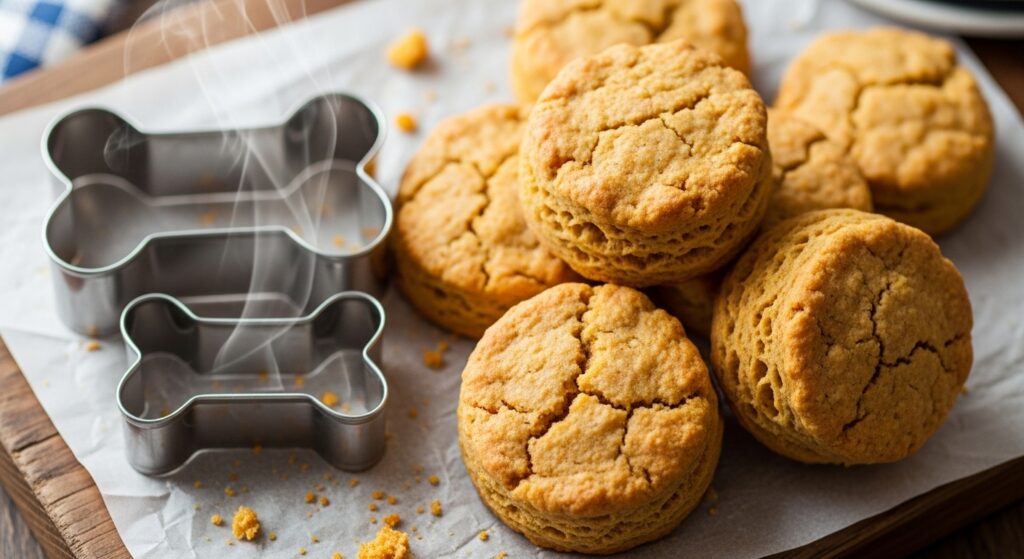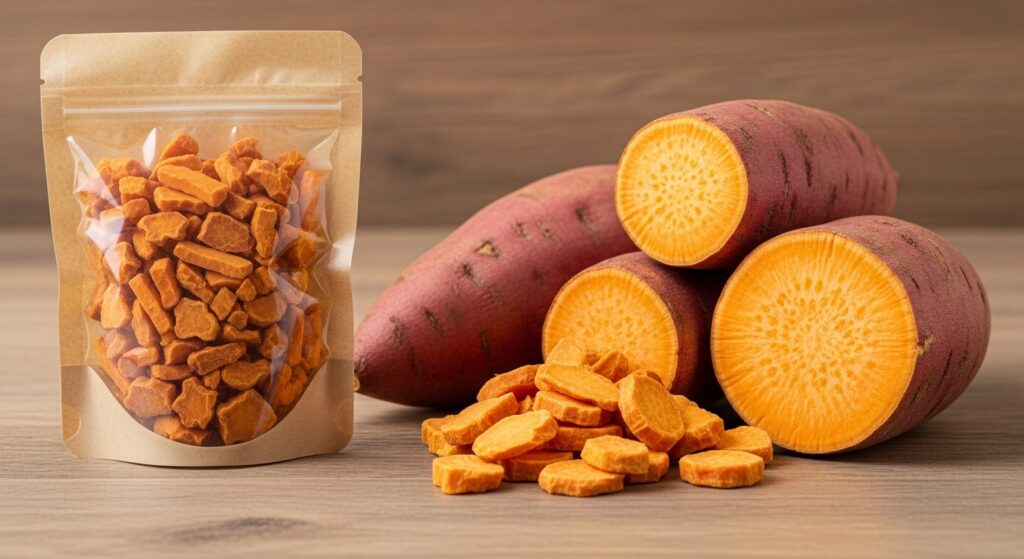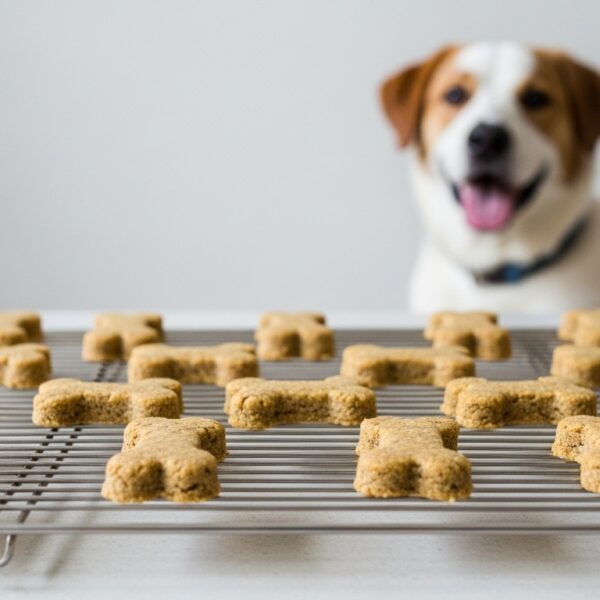Table of Contents
Introduction
Every dog loves a treat—and every pet parent loves giving them! But store-bought snacks often include mystery ingredients, preservatives, or fillers you might not want in your best friend’s belly. The best solution? Homemade dog treats! They’re tasty, natural, and easy to make. Plus, you’ll know exactly what’s inside every bite, making it safer for dogs with allergies or sensitive stomachs.Whether your pup is a picky eater, a senior, or a playful puppy, there’s a homemade treat recipe that’s just right.
Why Make Homemade Dog Treats?
- Total ingredient control: You pick what goes in and what stays out. No artificial flavors, colors, or preservatives.
- Cost-effective: Fresh treats at home are often much cheaper than store-bought “natural” options.
- Allergy-friendly: Easy to customize for wheat, chicken, or other allergies.
- Freshness: Your treats won’t sit on a shelf for months—they’re made with love, right in your kitchen!
- Fun for the family: Kids and adults alike love baking for their furry friends.
Basic Ingredients You Can Trust
Homemade dog treats don’t need to be complicated. Here are some common, safe ingredient ideas:
- Oats or whole wheat flour: Better than white flour for most pups.
- Eggs: For binding and extra protein.
- Peanut butter: Always choose unsweetened, xylitol-free varieties!
- Pumpkin puree: Fiber-rich, great for sensitive tummies.
- Bananas or applesauce: Natural sweetness without added sugar.
- Chicken, beef, or salmon: For meat-loving dogs (cooked, no bones or seasoning).
- Carrots, sweet potato, spinach: Add vitamins and color.
Important: Always check for dog-safe ingredients! Common foods like chocolate, raisins, grapes, onions, garlic, some nuts, and xylitol (an artificial sweetener) are toxic to dogs.

3 Tasty, Natural Homemade Dog Treat Recipes
1. Peanut Butter & Banana Biscuits
Ingredients:
- 1 ripe banana, mashed
- 1/3 cup natural peanut butter (no xylitol)
- 1 egg
- 1 cup oat flour (or finely ground rolled oats)
Instructions:
- Preheat oven to 350°F (175°C).
- Mix banana, peanut butter, and egg until smooth, then stir in the oat flour.
- Roll out the dough and cut into fun shapes (or just spoon out small mounds).
- Bake on a parchment-lined sheet for 15–18 minutes, or until firm.
- Cool completely before offering to your pup!

2. Chicken & Carrot Training Bites
Ingredients:
- 1 cup cooked, shredded chicken breast (unseasoned)
- 1 medium carrot, finely grated
- 1 egg
- 2 tablespoons oat flour
Instructions:
- Preheat oven to 325°F (160°C).
- Mix everything in a large bowl until you get a slightly sticky mix.
- Scoop out 1-teaspoon portions onto a lined baking tray.
- Bake for 20–25 minutes. Cool completely.
- Store extras in the fridge for up to a week.
3. Sweet Potato Chewy Strips
Ingredients:
- 1–2 large sweet potatoes
Instructions:
- Preheat oven to 250°F (120°C).
- Wash sweet potatoes and cut lengthwise into thin ¼ inch slices.
- Arrange on a parchment-lined baking sheet.
- Bake for 2–3 hours, flipping halfway, until dried but still a bit chewy.
- Cool and serve as a healthy, long-lasting chew!

Storage & Shelf Life Tips
- Cookies and biscuits: Aim to use within one week if stored in an airtight container. Refrigerate for a longer shelf life.
- Meaty treats: Always store in the fridge and use within 5–7 days, or freeze up to one month.
- Chewy veggie treats: Store in a cool, dry place or in the fridge for up to two weeks.
Customization & Special Diet Tips
- Allergies: Sub in coconut or chickpea flour for grain-free treats.
- Low fat: Use pumpkin or applesauce instead of oils or nut butters.
- Sensitive stomach: Stick with single-ingredient veggies or lean meats.

Frequently Asked Questions (FAQs)
Q1. Can I use regular flour in homemade dog treats?A: Whole wheat, oat, or grain-free flours are usually better for dogs than white flour. If your pup has allergies or sensitivities, consider coconut or chickpea flour.
Q2. How many treats can my dog safely eat per day?A: Treats should make up no more than 10% of your dog’s daily calories. Use tiny pieces for training, or ask your vet for portion advice based on your dog’s weight and health.
Q3. Are all fruits and veggies safe for dogs?A: No—avoid grapes, raisins, onions, garlic, avocados, and some nuts. Dog-safe options include carrots, blueberries, apples (no seeds), pumpkin, and peas.
Q4. My dog has food allergies. How do I make safe treats?A: Use simple recipes with single proteins, gluten-free flours, and limited extras. Always check labels, and introduce one new ingredient at a time.
Q5. Can I freeze homemade dog treats?A: Yes! Most baked or meaty treats can be frozen for up to a month. Thaw small amounts in the fridge before serving.
Conclusion
Homemade dog treats are more than just snacks—they’re a gesture of love and care that your pup will literally beg for! With these natural options, you can spoil your dog and feel great about what’s in their bowl. Start with a simple recipe, make it your own, and watch your four-legged friend’s tail wag with every bite.



